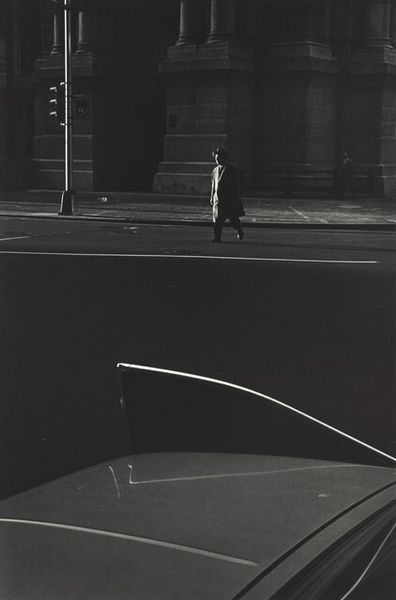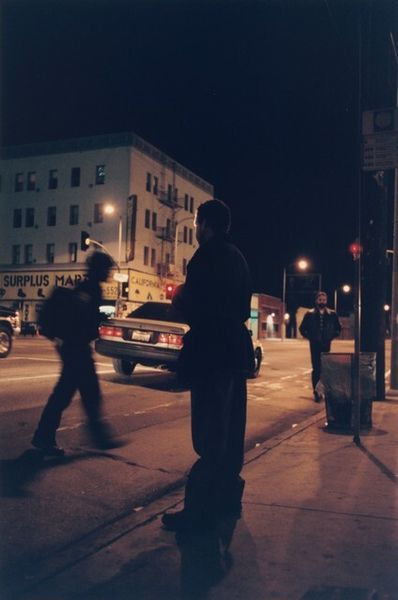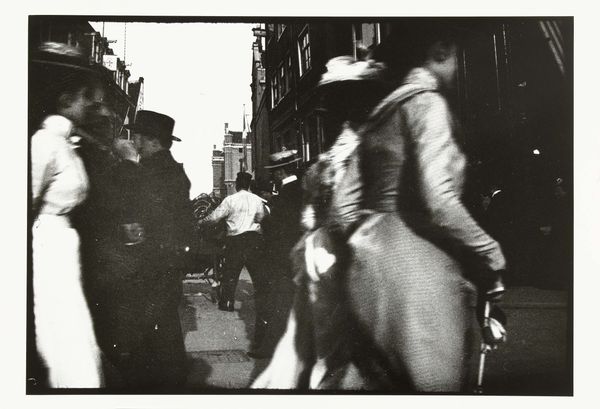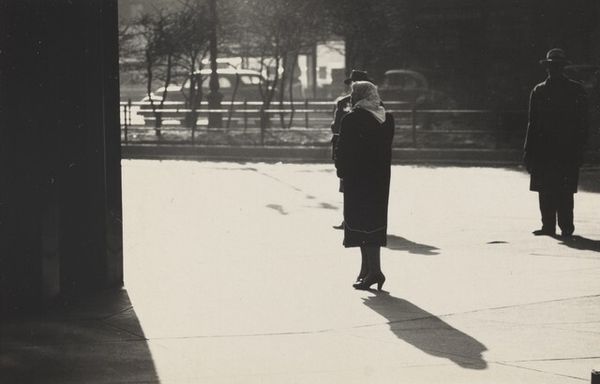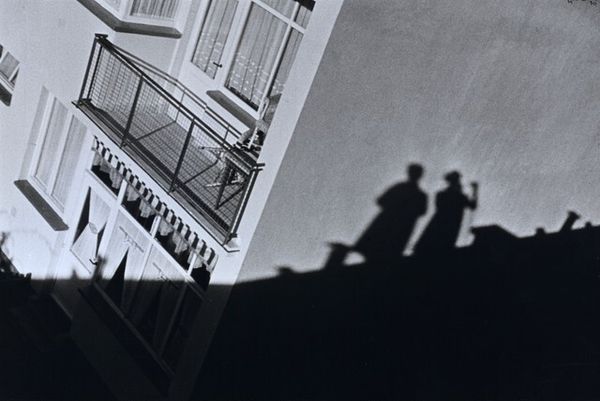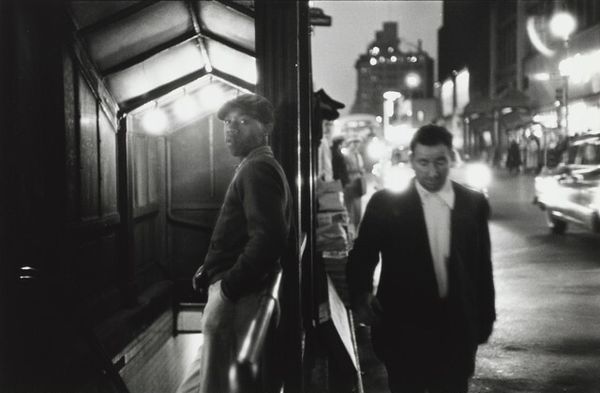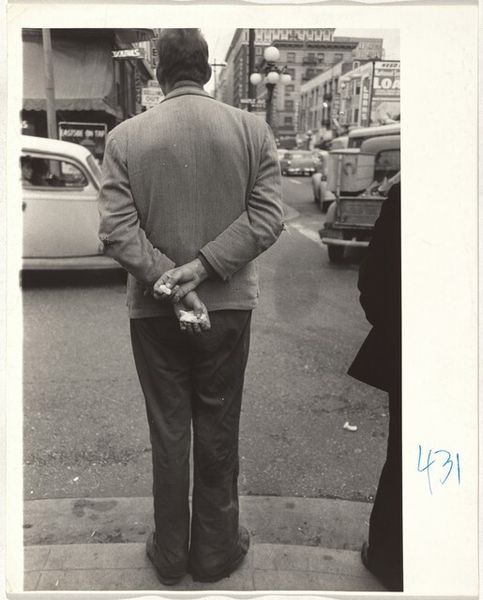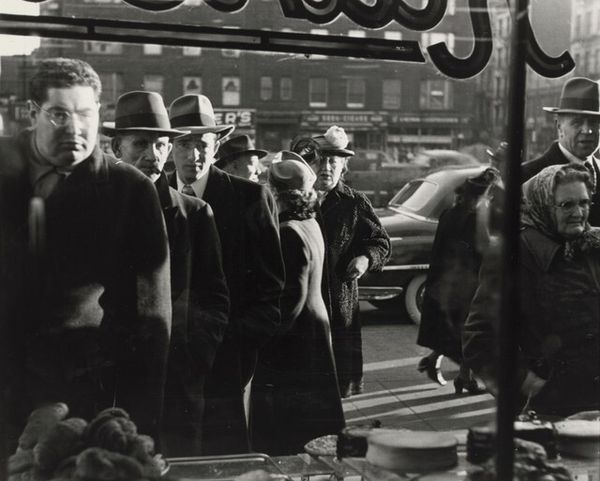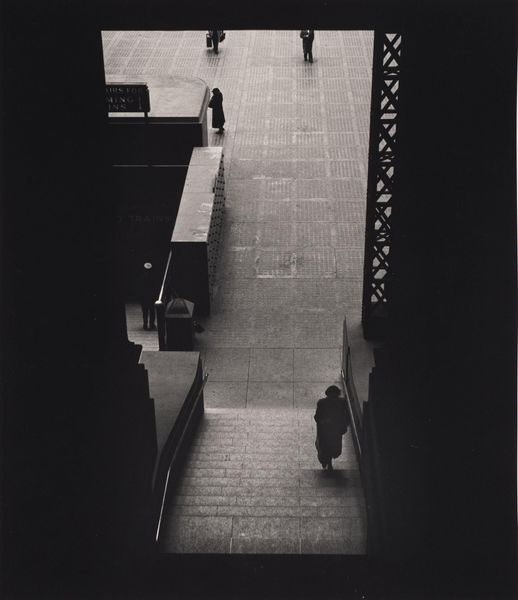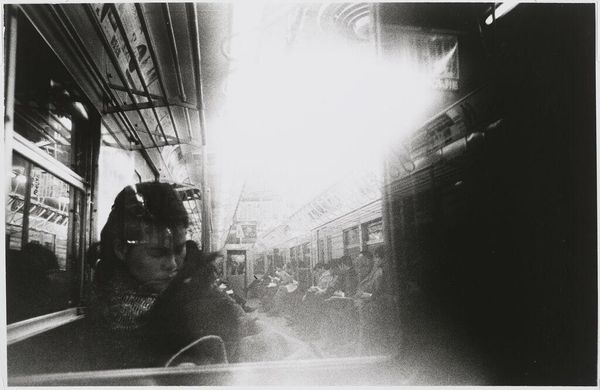
photography
#
portrait
#
black and white photography
#
street-photography
#
photography
#
black and white
#
monochrome photography
#
cityscape
#
monochrome
#
realism
#
monochrome
Dimensions: image: 18.9 × 28.9 cm (7 7/16 × 11 3/8 in.) sheet: 27.7 × 35.9 cm (10 7/8 × 14 1/8 in.)
Copyright: National Gallery of Art: CC0 1.0
Curator: This photograph, entitled "East Side, New York City," is by William Carter, with the dates "Possibly 1963-2006," indicating perhaps a span of time when it was taken or processed. My initial impression is one of noirish solitude. The black and white tonality enhances this sense, doesn't it? Editor: Absolutely. It strikes me as a study in the interplay of light and shadow, characteristic of silver gelatin prints. You can practically feel the grit underfoot. The depth of field is relatively narrow, drawing attention to the figure walking into the scene. It's as if we're looking at film stills from a late 50’s or 60’s production. Curator: Considering it, or some variations of it, might have been created over that span, the city's grit is, in a way, the point. Carter's work invites viewers to contemplate how urban spaces shape individual experiences. Look how the looming buildings seem to press in on the pedestrian, contributing to a feeling of alienation so common in big cities, yet how that lone figure remains resilient in that space. Editor: It's definitely interesting how he contrasts this man seemingly walking into the unknown alongside the commercial signs – the beauty parlor, promising a kind of escape, set against the workaday world surrounding it. Curator: Exactly! Those spaces of commerce are gendered as well. The photograph thus encapsulates multiple layers of social commentary. Is this man on his way home from work or simply in need of beautification of his own? What constraints, perhaps along the lines of social norms, or his identity, impede that journey? It speaks volumes. Editor: I'm drawn to the photographic materials here: the choices Carter makes – likely in the darkroom – really reinforce the atmosphere and context. It has this strong sense of production, like how we relate labor and dark spaces. Curator: Agreed. Carter presents to us this almost documentary-style, to unveil those otherwise muted historical and political power dynamics, doesn't he? Editor: In short, a photograph is about making as much as it is seeing. This image is no different. Curator: It urges us to really probe, if only for a moment, who moves through and leaves behind echoes in the city night. Editor: Absolutely, and thanks for lending your insights into its possible creation as well.
Comments
No comments
Be the first to comment and join the conversation on the ultimate creative platform.
